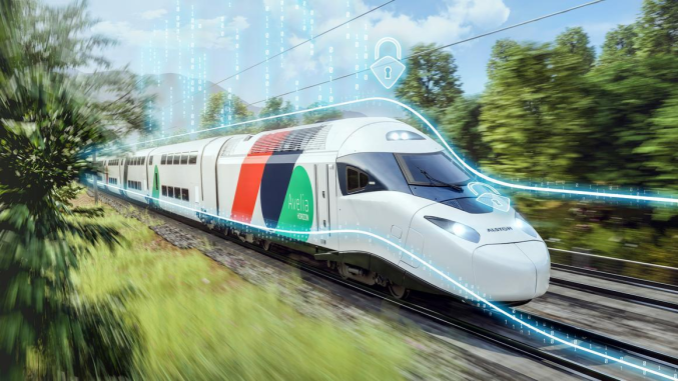
Alstom is at the forefront of defining the first international standard for railway cybersecurity, emphasising the critical role of standards like CENELEC TS-50701 and IEC 62443 in safeguarding rail networks. These standards, vital yet often underappreciated, ensure the security and resilient operation of essential rolling stock and infrastructure, protecting against cyber threats.
More Details:
A new international standard for the railway industry:
The rail industry is set to enhance its defence against cyber threats with a new international standard. While the existing IEC 62443 standard offers a broad framework for securing industrial systems, including rail networks and operations centres, it falls short for mixed distributed systems, a key aspect of railway systems. To fill this gap, the CENELEC TS 50701 standard is being introduced, paving the way for the upcoming IEC 63452 standard. This future standard aims to consolidate cybersecurity management across railway systems, specifically designed for the sector’s operational needs and building upon the foundation of the IEC 62443 series.

Why are cybersecurity standards important?
- Threat identification and risk assessment: Understanding vulnerabilities and prioritising mitigation strategies.
- Security controls: Implementing measures like network segmentation, access control, and intrusion detection.
- Incident response: Establishing clear procedures for identifying, containing, and recovering from cyberattacks.
- Patch management: Keeping systems updated with the latest security fixes.
Expert Insights:
Mr. Eddy Thésée, VP Cybersecurity Products & Solutions at Alstom said, “Standards are a crucial foundation for trust and interoperability in the rail industry. They provide a common language for stakeholders, ensuring consistent security practices across the entire ecosystem.” The new standards provide powerful tools for building a layered defence against cyber threats. They offer a holistic approach that addresses vulnerabilities across the entire system, from trains to back-office IT and remote shared resources.
Alstom, a key player in shaping the standards:
Alstom recognises the transformative potential of industry standards and actively contributes to shaping them. Here are four ways that we leverage and interpret these standards to benefit rail companies.
- Future-proofing security: “Cyber threats are constantly evolving,” says Eddy. “The new standards are designed to be flexible and adaptable, allowing us to stay ahead of the curve and ensure long-term cybersecurity.” By adhering to these standards, rail companies can be confident their systems are built with future threats in mind.
- Enhanced Efficiency: Standardised security practices across the supply chain streamline communication and collaboration. This reduces integration costs, accelerates project timelines, and facilitates interoperability between different systems and vendors.
- Best practice for security operations and maintenance of effective defence: At Alstom, we see the new standards as a way for rail companies to achieve a higher level of security awareness in their daily operations by driving a proactive security culture, where trainings and internal audits become a standard practice fortifying the company’s overall cybersecurity posture.
- Building trust and transparency: Compliance with industry-recognised standards demonstrates a commitment to robust cybersecurity. This fosters trust with regulators, passengers, and other stakeholders, ultimately enhancing the reputation of the rail industry.
The Future of Cybersecurity Standards:
For rail companies, embracing these standards is essential for leveraging digital innovations securely. Alstom’s initiative highlights the industry’s shift towards making cybersecurity integral to digital transformation, aiming for a secure, interconnected rail network. By championing standards and regulation, Alstom and the rail industry can ensure that security remains a cornerstone of technological progress and industry advancement.
Conclusion:
Alstom’s initiative for railway cybersecurity standards heralds a safer, digitally advanced future for rail transport. By spearheading these standards, Alstom ensures the industry’s technological progress is securely anchored against cyber threats, emphasising cybersecurity’s essential role in rail’s global evolution.
Source: Alstom – Press Release | Images Credit: Alstom
Join us for the upcoming 5th Rail & Metro Technology Conclave with 600+ Top Rail & Metro Industry Leaders on 23rd & 24th July, 2024 in New Delhi, India. Register here and participate in the summit.

